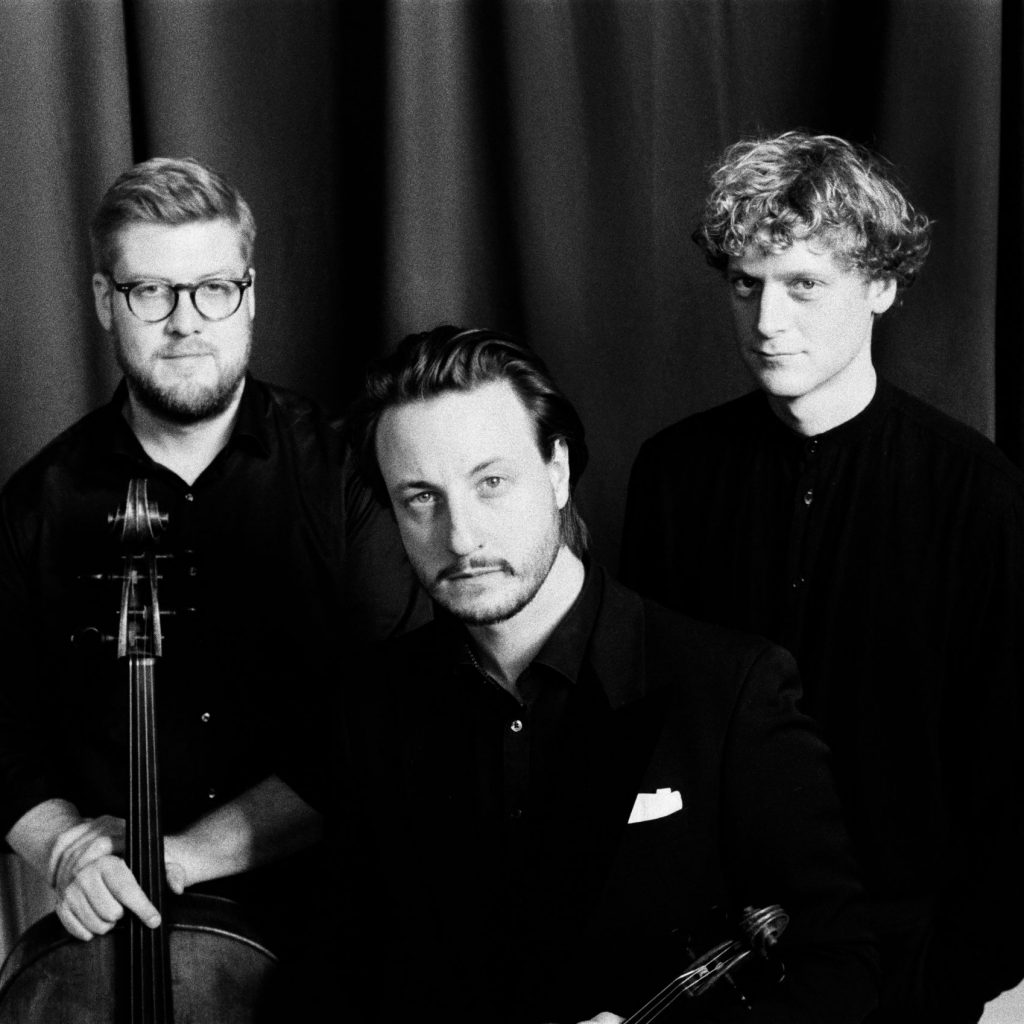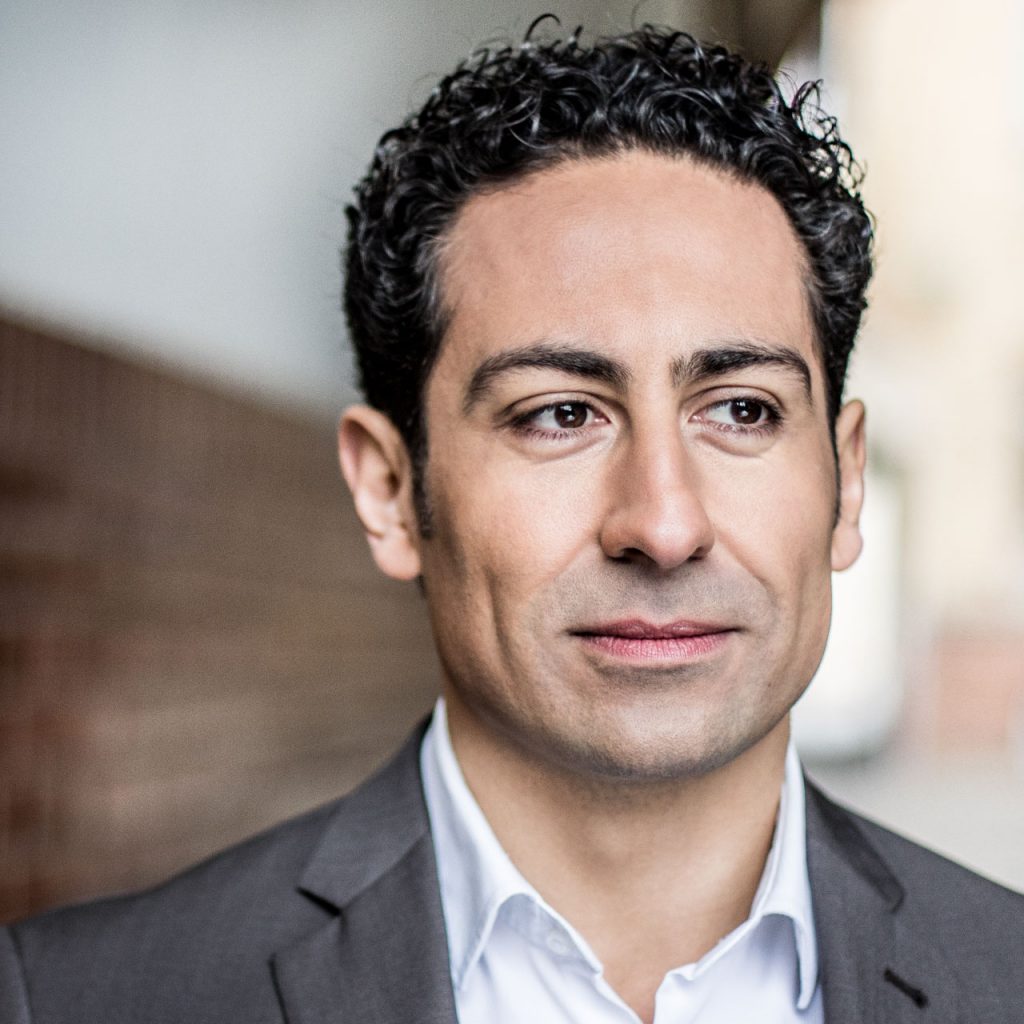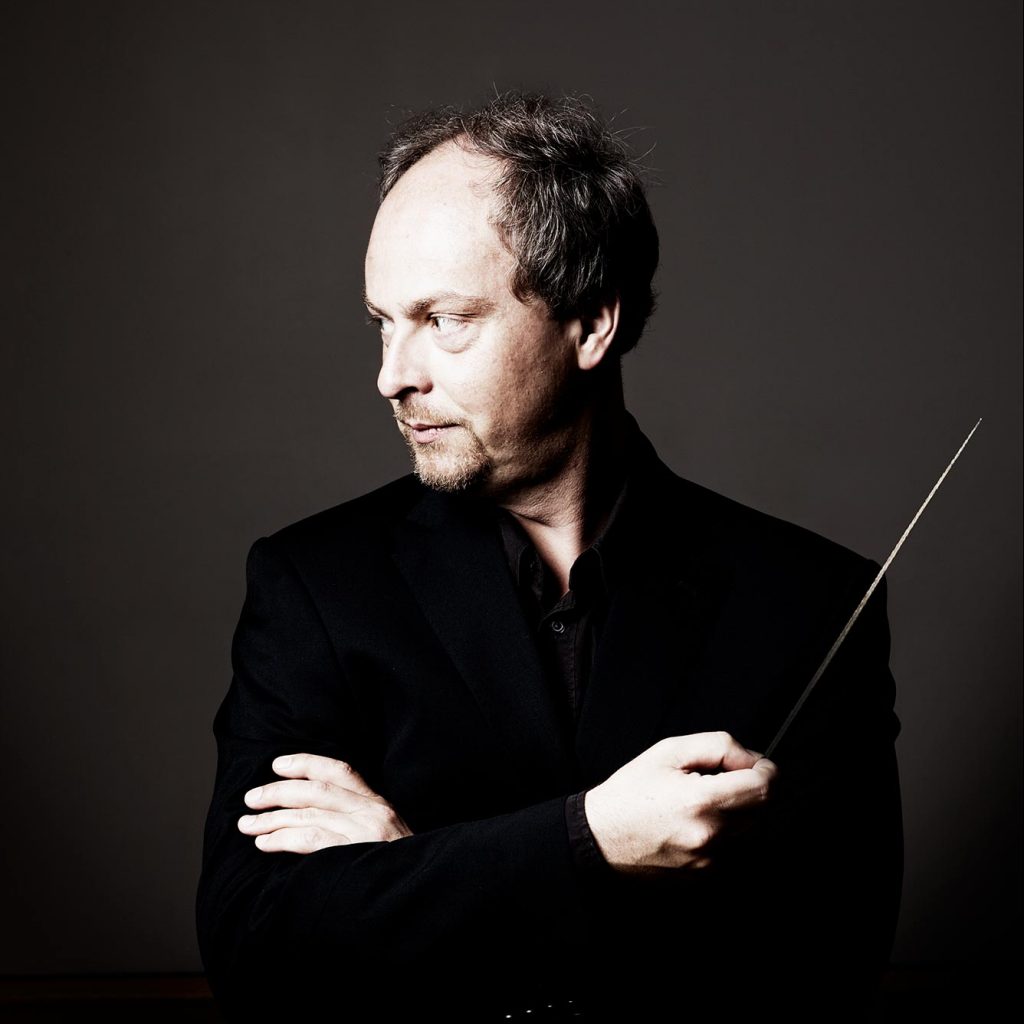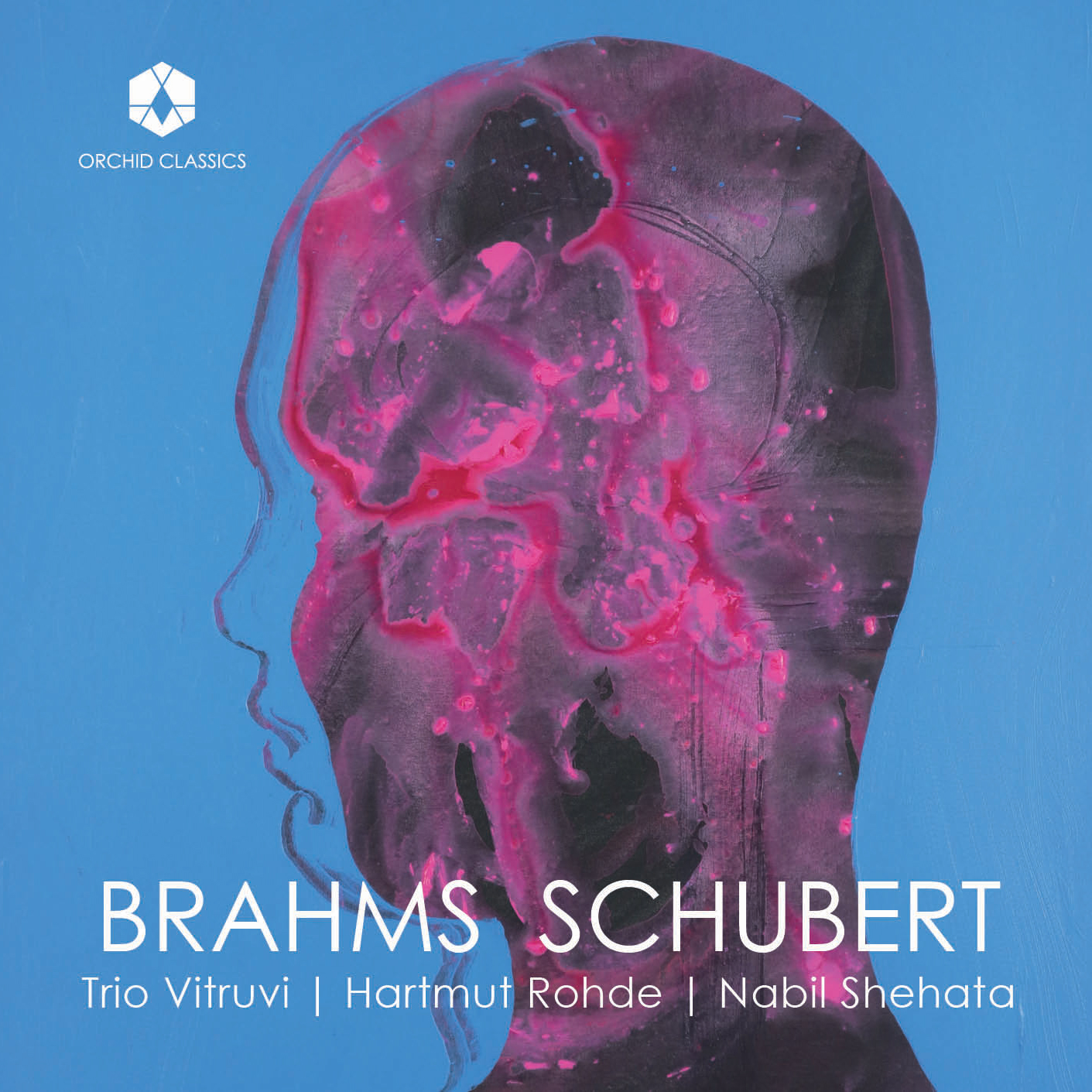Joined by the duo of violist Hartmut Rohde and double bassist Nabil Shehata, Trio Vitruvi’s second official album promises a compelling delivery of works situated at the heart of 19th century chamber music.



Johannes Brahms (1833-1897)
Piano Quartet No.3 in C Minor, Op.60
1. I Allegro non troppo
2. II Scherzo: Allegro
3. III Andante
4. IV Finale: Allegro comodo
Franz Schubert (1797-1828)
Piano Quintet in A major “The Trout”, D.667
5. I Allegro vivace
6. II Andante
7. III Scherzo: Presto
8. IV Andantino
9. V Allegro giusto
Trio Vitruvi
Hartmut Rohde, viola
Nabil Shehata, double bass
This album brings together two substantial chamber works written some decades apart, but completed, in each case, whilst their composers were on holiday. Of course, ‘holiday’ is a relative term for both men: these were not lazy weeks on sandy beaches, but a change of pace and freedom from city life that offered both time for rest and creative possibilities. For Johannes Brahms, summers allowed for precious quiet time to compose, walk, swim, eat good food and socialise at leisure. For Franz Schubert, holidays in Steyr, in north-west Austria were part-relaxation, part-networking opportunity thanks to his friend and colleague Johann Michael Vogl, who had been born near the little town. Thus each composer gained space, time and musical rejuvenation in these crucial escapes from the Austrian capital.
Brahms’s third and final Piano Quartet in C minor Op.60 was a piece some decades in the making. When he was still in his early twenties, he wrote a piano quartet in C sharp minor, trying it out in several versions but apparently reaching a creative impasse. In 1873, around two decades later – years in which he had gone from young musical nobody to one of the most widely-respected composers in Western Europe – he returned to the abandoned project and tried to find a new way forward. Working at it over the next year or so, both in Vienna and on his summer break in Rüschlikon on the edge of Lake Zurich, he lowered the key by a semitone to C minor, radically reworked two movements of his original, and composed two new ones to make a set of four. The completed Piano Quartet was premiered in November 1875 and published that same autumn, with Brahms’s skilful revisions rendering almost entirely invisible the joins between old and new material.
It’s clear from the first bars of the piece that this is a work of symphonic ambition, the piano octaves ringing out across the restless sighs of the strings. The proportions of this first movement are grand and sonorous, the themes by turn turbulent and sweetly lyrical. A tautly-wound, almost desperate Scherzo follows before the tension melts away in an Andante of exquisite beauty. Even the finale eventually gives way from its initial restlessness to yield a major-key resolution at the last moment.
Brahms evidently had a particular literary model in mind in relation to this Quartet, most pithily revealed in the he sent to his publisher on finishing the work: ‘On the cover you must have a picture, namely a head with a pistol to it. Now you can form some conception of the music! I’ll send you my photograph for the purpose. You can use blue coat, yellow breeches and top-boots, since you like colour-printing.’ The figure Brahms depicts here is the hero of Johann Wolfgang von Goethe’s scandalously popular novel, The Sorrows of Young Werther, a passionate young man who ultimately kills himself on realising that he can never be with the woman he loves. Though it had been published in the 1770s (and was quickly blamed for seemingly ‘inspiring’ a spate of suicides among young men who had been unlucky in love), Werther remained a hugely influential book – and later opera by Jules Massenet – and as a personality he was familiar to all afficionados of German literature.
In the early decades of the nineteenth century, as Goethe reigned supreme in Austro-German culture, Franz Schubert was building a career as one of the very first genuinely freelance musicians living and working in Vienna. Thanks to his vocal skills as a young chorister, he gained admission to the distinguished Stadtkonvikt school – the best education available for non-aristocrats in Vienna – and it was thanks to some of the friends and contacts he made during his school years and immediately after that he came into contact with Johann Michael Vogl, a distinguished opera singer some thirty years Schubert’s senior.
Between 1819 and 1825, Schubert and Vogl spent several summers in Steyr, just down the road from Vogl’s birthplace of Ennsdorf. The singer knew all the cultured music-lovers in the town and organised accommodation and performances during their stay. The most important musical benefactor in Steyr was the civil servant and amateur musician Sylvester Paumgartner, who held regular concerts in his home and was a good wind player and cellist. And it was at Paumgartner’s request that Schubert composed his ‘Trout’ Quintet.
It’s not clear whether it was Paumgartner who suggested that Schubert write for the slightly unusual combination of violin, viola, cello and double bass with piano: the line-up would have been familiar thanks to the slightly older composer Johann Nepomuk Hummel, whose music Schubert greatly admired. But Paumgartner was certainly responsible for requesting that Die Forelle D550, the composer’s catchy song of several years earlier, be incorporated as the theme for a set of variations. The Lied – to a text by Schubert’s near-namesake, Christian Friedrich Daniel Schubart – relates the cold-blooded actions of a fisherman who stirs the mud in a babbling brook to deceive and hook a trout from the water. (Schubert spares us Schubart’s final ‘moral of the story’ verse, in which the action is spelled out as a cautionary tale to warn bright young ladies away from ‘seducers with their fishing rods’!)
The result of uniting such a memorable melody with a rich palette of string instruments and a hearty dose of Austrian sunshine is a gloriously cheerful work in five movements, with a chamber-orchestral richness. The cheerfully skipping Allegro vivace is followed by an elegant Andante and a Scherzo full of bounce and verve. Between this and the graceful finale comes the Forelle variation set, which begins with the strings alone introducing a fractionally altered version of the song, as if tidied and dressed in its best bib and tucker. It is only at the end of the movement that the mischievous chromatic weaving of the trout’s familiar piano accompaniment makes an appearance – as if here, at least, the wily fish may have won the day after all.
This new album of chamber works featuring piano brings together Brahms’ Piano Quartet No. 3 in C minor, and Schubert’s much-loved Piano Quintet in A Major, ‘the Trout’, delivered by the dynamic and energetic forces of Trio Vitruvi, a Danish ensemble that has risen to become one of the leading chamber groups in Europe since their formation a decade ago.
Joined by the duo of violist Hartmut Rohde and double bassist Nabil Shehata, Trio Vitruvi’s second official album promises a compelling delivery of works situated at the heart of 19th century chamber music.
Brahms’ Piano Quartet No. 3 in C minor, Op. 60, is a deeply emotional and turbulent work, characterised by its dark intensity, complex harmonies, and dramatic interplay between instruments. It reflects Brahms’ inner struggles and depth of feeling, often associated with his romantic entanglements and personal turmoil.
Schubert’s Piano Quintet in A Major, D. 667, nicknamed the “Trout,” is lighter in character, known for its buoyant melodies, bright and playful energy, and distinctive variations on his earlier song “Die Forelle” (The Trout). It evokes a joyful, carefree spirit with moments of lyrical beauty and graceful charm, contrasting with Brahms’ more brooding tone.
Trio Vitruvi
Trio Vitruvi has played together since the summer of 2013, where they attracted great attention at their debut at Festspiele Mecklenburg-Vorpommern ‘Junge Elite’ 2013, Germany. The trio won both First Prize and the Audience Prize at the Danish National Radio’s P2 Chamber Music Competition, 2014. Shortly after, the trio won yet another First Prize in Latvia at the Jurmala International Music Competition.
Since then, Trio Vitruvi has performed all over Europe, Russia and China. They have performed in concert halls such as Carnegie Hall, Wigmore Hall, The Mariinsky Theatre, Salle Cortot, Laeiszhalle, Schloss Grafenegg, and in 2015 together with Adam Fischer & The Danish Chamber Orchestra, Trio Vitruvi performed Beethoven’s Triple Concerto.
In April 2018 Trio Vitruvi released their debut CD recording of Schubert’s Trio, Op.100 and Nocturne, D.897 on Bridge Records. The record was presented at Trio Vitruvi’s debut concert in Carnegie Hall.
In 2018 Trio Vitruvi founded KAMMERBALLETTEN, an annual festival celebrating cutting-edge ballet and chamber music, that has received critical acclaim and won prizes.
The Augustinus Foundation has directly supported the trio with instrument loans: Jacob la Cour plays a Giovanni Battista Ruggeri, Cremona 1700 and Niklas Walentin plays a Joannes Franciscus Pressenda / Q. Raphael, Torino 1837.
Hartmut Rohde
Viola
Hartmut Rohde is one of Germany’s most sought after violists, both for his performances as a soloist and as a chamber musician. He has given a number of successful performances, particularly of the concertos by Walton and Hindemith, and as a chamber musician, Hartmut Rohde regularly gives concerts in Australia, the USA and Canada, South America, Israel, South America, Europe and Switzerland.
Numerous competition awards have been the basis for international concert performances with star musicians such as Heinrich Schiff, David Geringas, Lars Vogt, Daniel Hope, Janine Jansen, Arto Noras, Patrick Gallois, and Jörg Widmann.
Hartmut Rohde is a founding member of the Mozart Piano Quartet, which is one of the world’s leading piano chamber music ensembles. The quartet received the newly created OPUS Klassik Prize in October 2018 and has toured Asia, South America and the USA in 2019-2021, performing in the most important music centres there.
He is the artistic director of the International Max Rostal Competition in Berlin. From 2013 to 2018 he was furthermore artistic director and conductor of the Leopoldinum chamber orchestra in Wroclaw.
Nabil Shehata
Double Bass
Nabil Shehata is internationally acclaimed both as a virtuoso double bassist and as conductor. He is the winner of the ARD Competition and its “Audience Prize” and was for four years the solo bassist of the Berlin Philharmonic.
Leaving the famous orchestra in 2009, Nabil Shehata has focused on his career as a conductor where he has been the Principal Conductor of the Philharmonie Südwestfalen since 2019 and Music Director of the Munich Chamber Opera since September 2011. Prior to these engagements he was assisting Daniel Barenboim at the Staatsoper Berlin.
He frequently appears with orchestras as a guest conductor and has recently performed with the Stuttgart Philharmonic, the Munich Radio Orchestra, the Robert Schumann Philharmonic and the Luxembourg Philharmonic Orchestra, among others.
As a double bass professor in Munich and Berlin and as a member of the West-Eastern Divan Orchestra, he passed on his experience to younger musicians for many years.

Click the button above to download all album assets.

